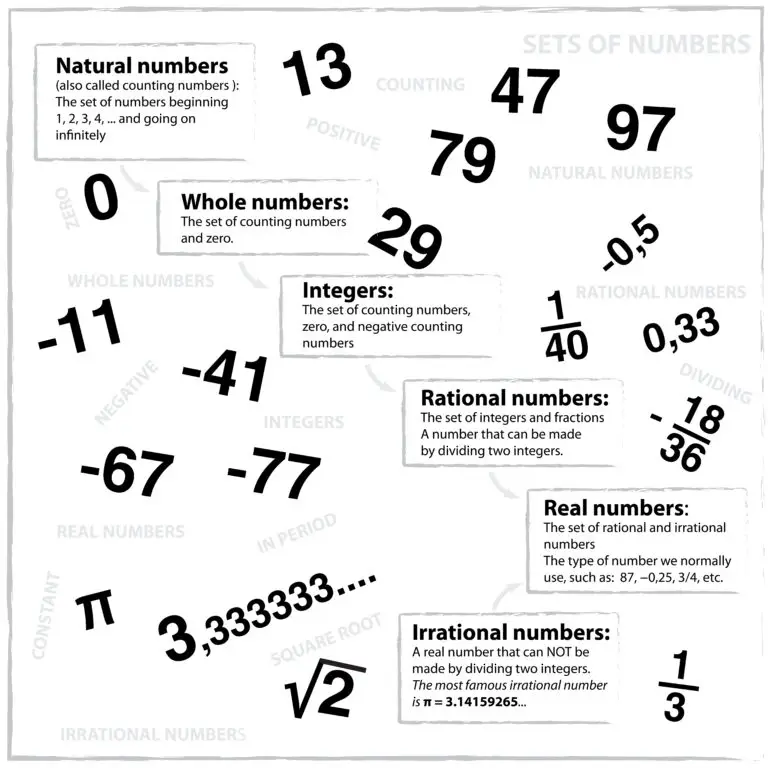Irrational Number

Table of Contents
What is an Irrational Number?
An irrational number is a real number that cannot be expressed as the ratio (or quotient) of two integers, where the numerator and denominator are both integers and the denominator is not zero.
In other words, an irrational number cannot be written in the form \frac{a}{b}, where a and b are integers and b\ne 0. Irrational numbers have non-repeating, non-terminating decimal expansions.
- Non-Repeating Decimals: The decimal representation of an irrational number goes on forever without repeating any pattern.
- Non-Terminating Decimals: The decimal expansion of an irrational number continues indefinitely without terminating.
- Cannot Be Written as Fractions: Irrational numbers cannot be expressed as the ratio of two integers.
Examples of Irrational Numbers
Square Root of a Non-Perfect Square:
- \sqrt2: The square root of 2 is irrational because it cannot be expressed as the fraction of two integers. Its decimal representation is non-repeating and non-terminating: 1.41421356237…
Non-Perfect Roots:
- \sqrt3: The square root of 3 is irrational. Its decimal representation is non-repeating and non-terminating: 1.73205080757…
- \sqrt5: The square root of 5 is irrational. Its decimal representation is non-repeating and non-terminating: 2.2360679775…
Transcendental Numbers:
- \pi: The mathematical constant pi (\pi) is irrational. Its decimal representation is non-repeating and non-terminating: 3.14159265359…
- e: The mathematical constant e (Euler’s number) is irrational. Its decimal representation is non-repeating and non-terminating: 2.71828182845…
Related Links
Complex Numbers
Imaginary Unit
Rational Numbers
Real Number